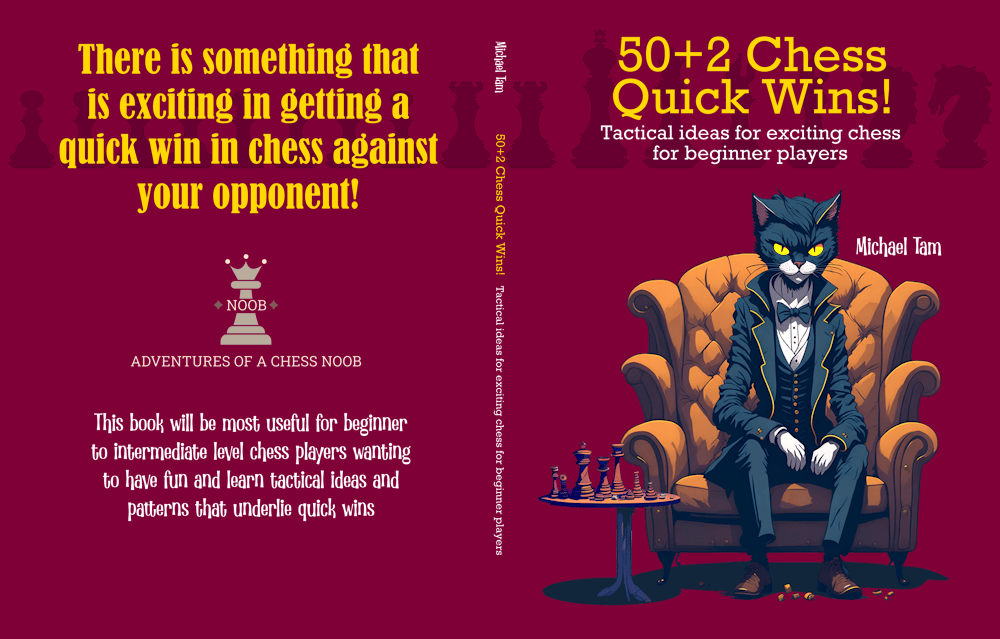
Spooked by a Giraffe! | Qg4 vs Zhuravlev Countergambit, Vienna Game 🦒♟️🤩
#vienna #zhuravlevcountergambit #Qg4 #giraffe #beatdown
The other day, I faced against the Zhuravlev Countergambit when playing the Vienna Game as White (1. e4 e5 2. Nc3 Bb4), and I grinned. 😏
![]()
Note:
I last covered a game of playing against the Zhuravlev Countergambit in Quick Wins #87. That article covers some historical games, from the early days in the mid-19th century during the developmental phase of what will become the Vienna, e.g., (Hamppe — Falkbeer, 1855, Vienna), to the OG game played by Soviet/Latvian IM Valerys Zhuravlev (1938-2021) – (Klavins — Zhuravlev, 1969, Riga, Latvia). Check it out!
![]()
Those of you who have followed my channel for a while will know that my favourite anti-Zhuravlev Countergambit counterattack (😅) is the immediate aggressive (3. Qg4), which follows the same tactical ideas as one of my all-time favourite Vienna Game lines, the Giraffe Attack against the Anderssen Defense. We looked at the devastation wrought against an opponent with the Giraffe Attack only earlier this week!
I like to imagine that queen in this line as an angry rampaging giraffe – somewhat unexpected, a bit ungainly, but also rather unsettling! At the beginner-intermediate level, my experience is that most opponents with Black who played the Zhuravlev or Anderssen Defense when faced with the giraffe-ish might of (3. Qg4), have an intuition that things are “not quite right”, that it “can’t be good”. And yet, they cannot find a clear way of punishing the move!
In this game, my opponent with the black pieces was clearly spooked by the move! They spent over two minutes thinking, clearly worried about my queen’s pressure on their g7-pawn. And when they finally made a move, they abandoned their confrontational approach with the Zhuravlev bishop, and un-developed it all the way back to f8 to defend the pawn (3… Bf8)!
I suspect that Black might have assumed that my queen was in an unwise location once they shored up the defence of g7, and that they would be able to win back the lost tempo with developing moves that chased my queen (e.g., Nf6 or d6). This opening heuristic makes a lot of sense, but unfortunately, it isn’t correct tactically. Losing unnecessary tempo against Vienna Game lines in the opening is disadvantageous and can sometimes be fatal!
Black is correct that the queen shouldn’t remain on g4, but there is no reason to un-develop the queen. The “parking square” for the giraffe-queen is g3, immediately placing pressure on Black’s only developed piece, their e5-pawn.
We trade a few developing moves, and on move 6, I have three minor pieces developed to their natural squares (the knights and the light square bishop), and of course, the queen is out as well. Black, however, has only the king’s knight and then made a tactical mistake with another slow move (6… g6?). The difference in development is now critical!
With (7. Ng5!) I launch my attack against Black’s weak f7-pawn! Here, White’s only good option is to trade bishops (7… Be6 8. Bxe6 fxe6) and damage their pawn structure. Black attempted to counterattack my queen with (7… Nh5??), a natural move, but a blunder! The knight was Black’s only developed piece, and by moving it to the edge of the board, it no longer provided the necessary defensive duties. Indeed, Stockfish identifies a long, forced checkmate line of no more than 11-moves!
During the game, I didn’t know that there was forced checkmate (and certainly not 11-moves in length!), but I did have an intuition that a checkmate pattern was possible. In these Vienna Game positions, it’s sometimes possible to force win massive material, or, like in the recent Vienna Gambit Beatdown, corral Black’s king with checks, draw him out, and checkmate! And this is what happened in this game! 😁
My queen was in no danger as Black was just one step too slow – every subsequent one of my moves were checks, starting with (8 Bxf7+)! Black’s poor king is dragged off his throne, forced to run in front of his troops on the field of battle, and chased to the edge of the board! And then the final humiliation (14. b4#) 😭; Black’s king is not afforded the dignity of being checkmated by one of White’s powerful pieces, but is executed by Barry, the humble b-pawn! 🤣 Good game, GG!
The big takeaway from this game for Vienna Game lovers is to explore and try the giraffe-ish Qg4 lines against the Zhuravlev Countergambit and Anderssen Defense. They are very fun and very winning lines!



